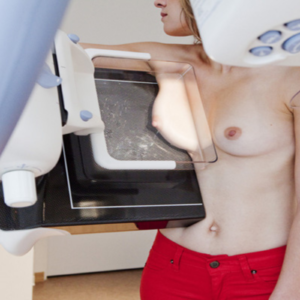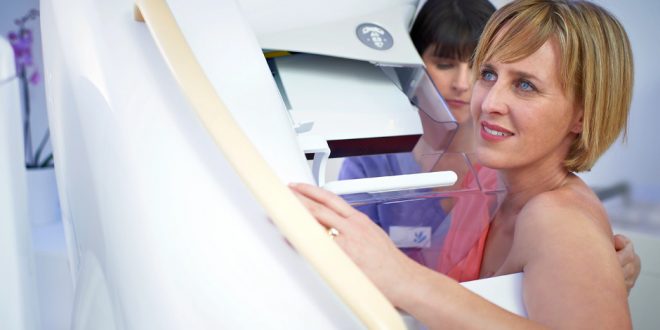Breast positioning is one of the most important yet difficult aspects of breast cancer detectionand diagnosis. As a key element affecting mammography, proper positioning increases the sensitivity of the mammogram and augments the amount of breast tissue being imaged.
Our team of experts compiled these comprehensive tips in performing the proper positioning for CC and MLO to help you get proper CC and MLO views.
Steps in Getting A Perfect CC View:

- The patient should be standing slightly away from the image receptor with both feet pointed straight forward.
- With shoulders slouched, ask the patient to lean forward with hips back.
- Stand on the medial side of the breast when positioning.
- Patient’s head is turned toward you.
- Elevate the IMF and adjust the height of the receptor.
- Using 2 hands, pull the patient’s breast up and away from the chest wall onto the receptor.
- Anchor the breast in place with one hand, and DO NOT LET GO!
- The nipple should be pointing straight towards the back center of the receptor.
- Drape the opposite breast over the corner of the receptor by placing the sternum in contact with the receptor.
- REMEMBER, YOU MUST VISUALIZE MEDIAL TISSUE SINCE IT IS NOT DEMONSTRATED ON THE MLO!
- Place your opposite arm across the patient’s back with your hand on their shoulder.
- Gently pull some skin up and over the clavicle on the side you are imaging in order to decrease the patient’s discomfort when the paddle contacts the skin.
- As the paddle begins to travel downward, pull lateral posterior breast tissue onto the detector in order to visualize maximum lateral glandular tissue.
- Add an XCCL if you are not able to visualize all the lateral glandular tissue on the CC.
- Make certain that the paddle is positioned against the chest wall to maximize visualization of posterior breast tissue.
- The pectoralis muscle is visualized on approximately 30% of properly positioned CCs.
- Instruct the patient to stop breathing during the exposure.
Steps in Getting A Perfect MLO:

- Adjust the angle of the gantry to place the pectoralis muscle parallel to the receptor.
- Average angulation is 50 degrees.
- Short patient requires less angulation
- Tall patient requires more angulation
- Adjust the height of the receptor to place the top at the level of the sternoclavicular joint or halfway between the top of the shoulder and the axillary crease.
- The patient’s feet must be facing forward.
- Place the corner of the image receptor into the axilla, so it is just anterior to the latissimus dorsi.
- Instruct your patient to lean in/reach across the top of the receptor.
- Rest the patient’s arm with the elbow slightly bent across the top of the receptor.
- Do not allow the patient to grasp the handle grip, as this will place tension on the pectoralis muscle.
- Align the ASIS (anterior superior iliac spine) with the bottom corner of the receptor in order to visualize the IMF (inframammary fold). ABDOMINAL TISSUE MUST BE INCLUDED IN THE IMAGE.
- With one hand, push posterior breast tissue forward.
- With the opposite hand, pull/scoop the pectoralis muscle and breast tissue onto the receptor.
- Smooth out the skin of the axilla to prevent skin folds.
- Hold the breast in an UP AND OUT position to prevent drooping (camel nose appearance).
- As the paddle descends, the top corner of the paddle should rest just below the humeral head and just anterior to the clavicle.
- Adjust the patient to include all posterior and inferior breast tissue.
- Patient’s feet should be facing forward toward the unit.
- Instruct your patient to hold her opposite breast BACK AND UP in order to open the IMF.
- Pull down on the abdominal tissue to verify that the IMF is free of skin folds.
- For patients with a protruding abdomen, you may have to add a 90-degree lateral view focusing on inferior breast tissue and an open IMF.
- Instruct the patient to stop breathing during the exposure.
- The pectoralis muscle should extend down to the level of the Posterior Nipple Line (PNL) or below. You may check that there is comparable breast tissue visualized by comparing the PNL measurements on the CC and the MLO.
- The measurements should be within 1 cm, with the larger measurement on the MLO.
Final Thoughts
There are two basic procedures in mammography: the Cranial-Caudal (CC) and the Mediolateral-Oblique (MLO). A professional mammographer needs in-depth knowledge, efficiency, and expertise in proper breast positioning during the aforementioned procedures.
If you want to learn more about mammography positioning, you can visit RadComm and check out our online courses. You’ll find self-guided, study-by-mail mammography courses that you can learn at your own pace and in the comfort of your home.
Check out our Facebook page at Mammography Credits.
http://www.facebook.com/pages/Mammography-Credits/144420312249710?v=wall

Basic & Advanced Mammography Positioning Training Continuing Education Course
References:
- https://www.arrt.org/


